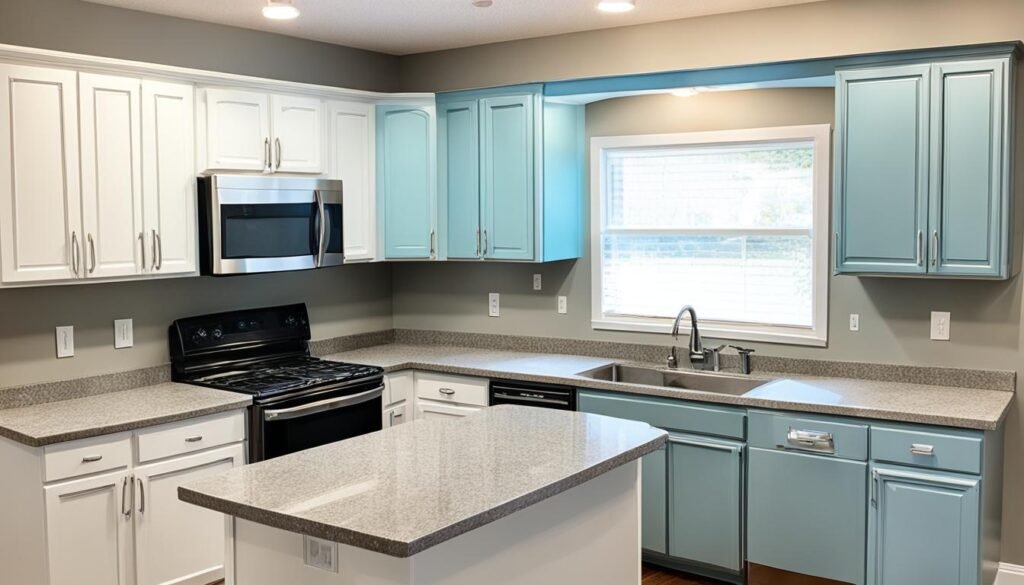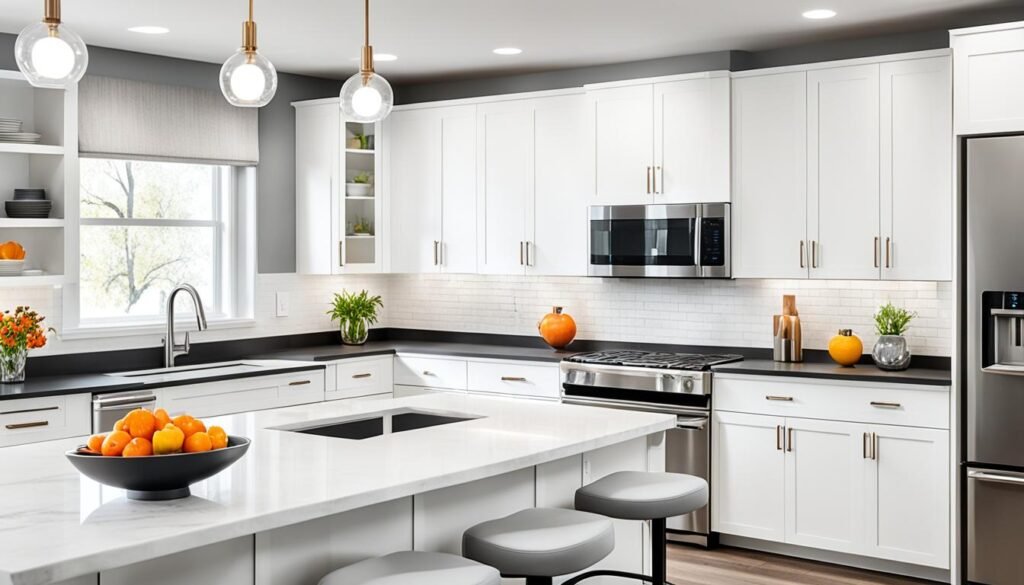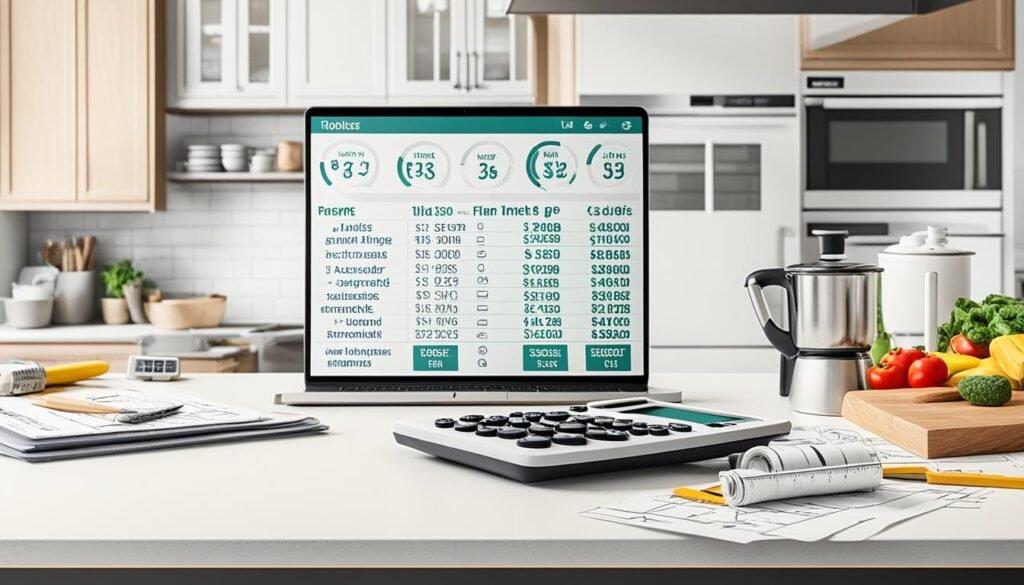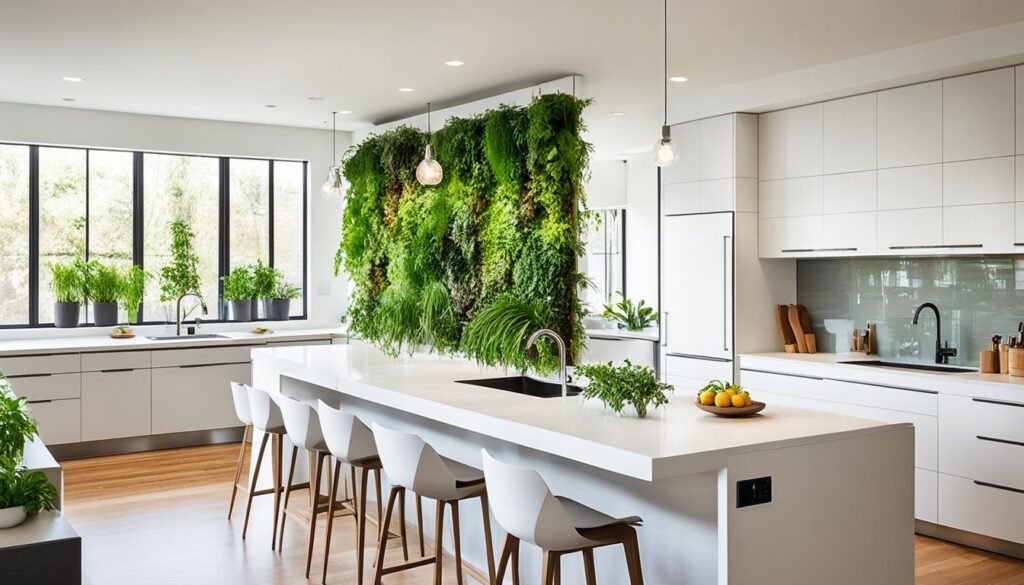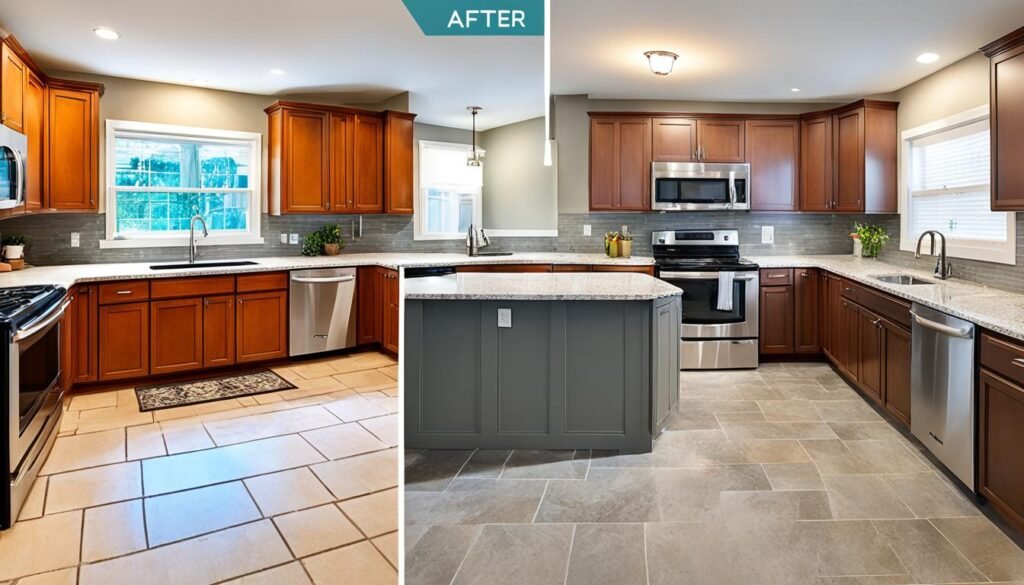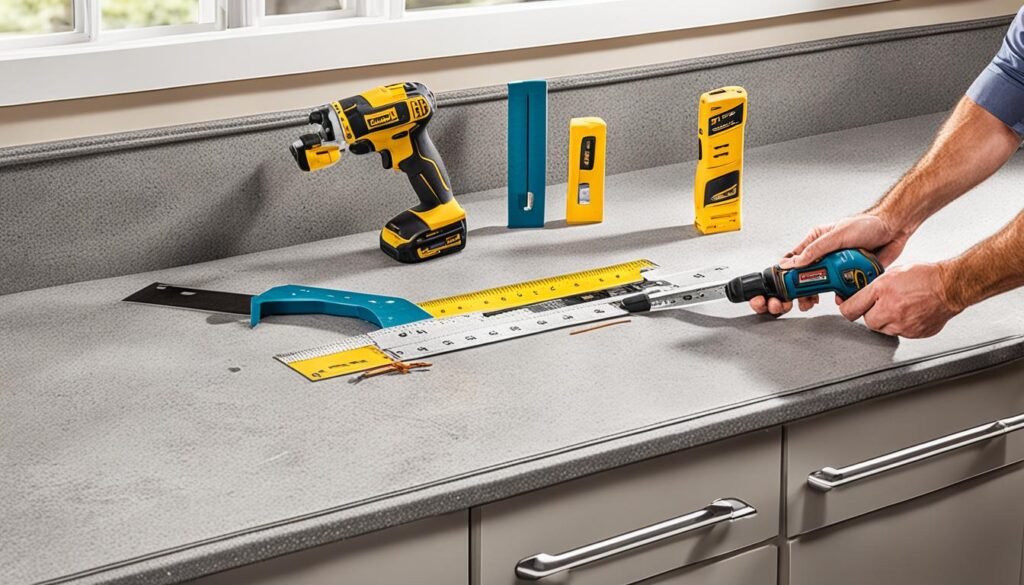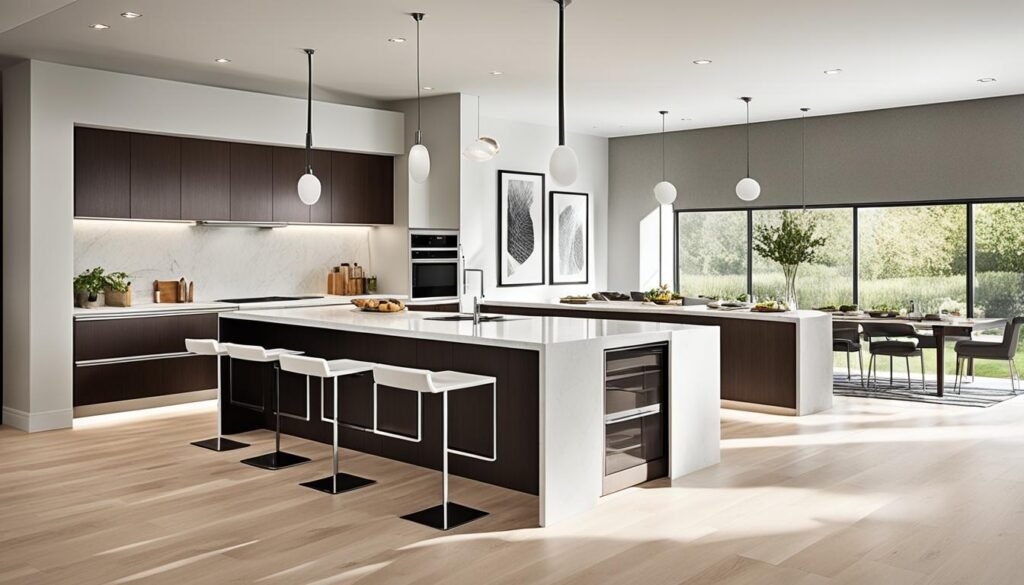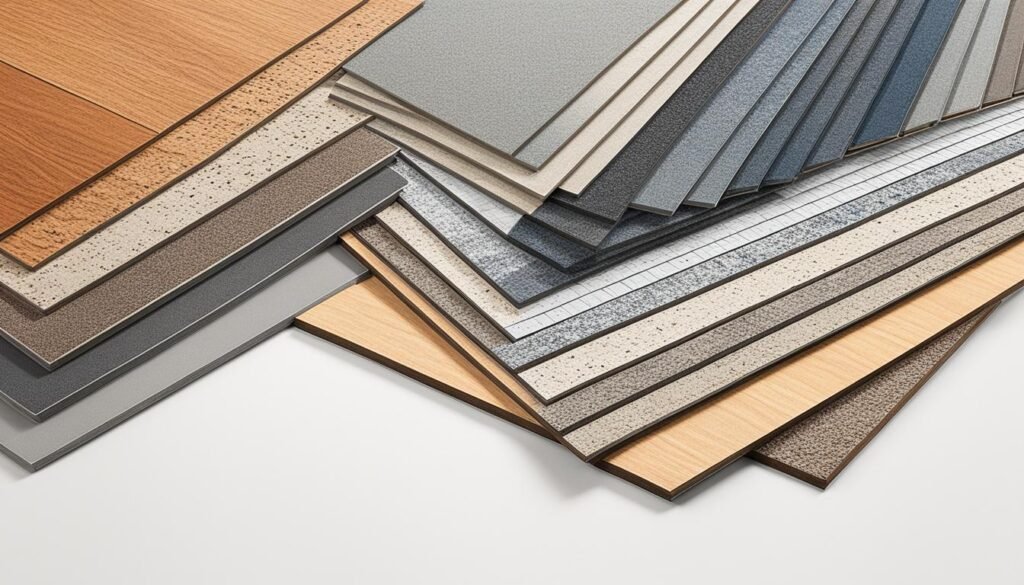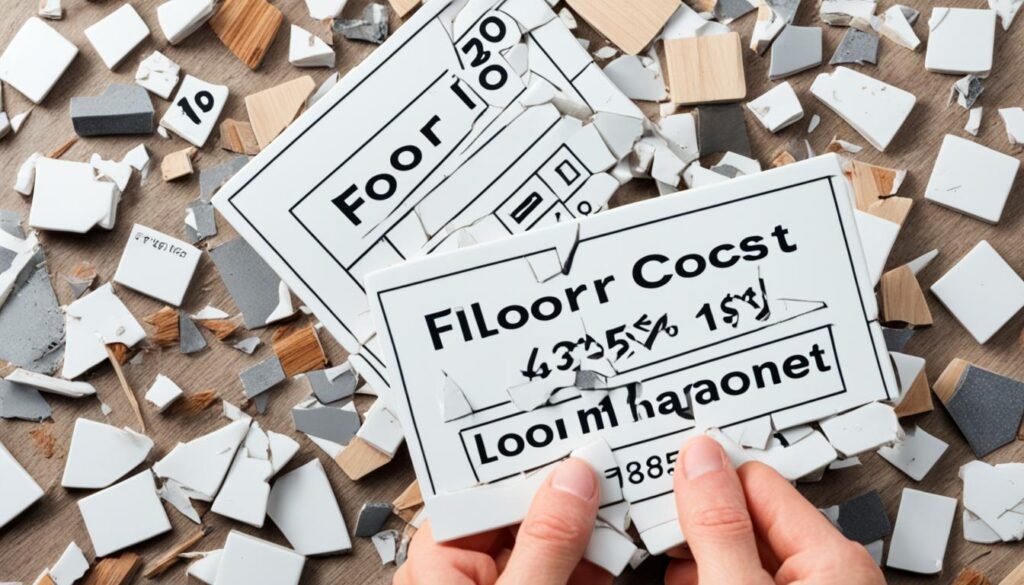Kitchen Remodel Duration: How Long Do They Take?
The average time for a kitchen remodel can be short or long. It depends on how big the project is and the work needed. It’s important to know how long your kitchen makeover might take. Let’s look into what affects a kitchen remodel’s time. And how to make the renovation go smoothly. Key Takeaways: The average time taken for a kitchen remodel depends on the project’s size and work needed. The kitchen’s size, when you can get materials, and the workers can affect the timeline. Simple updates like painting or new hardware can be quick. Big changes, like altering the layout, take longer. Good planning and knowing your budget help avoid delays in your kitchen remodeling. Working with pros like Concrete Contractor Pros helps make your remodeling efficient and smooth. Why Kitchen Remodeling Takes Time Kitchen remodeling is not simple. It needs a lot of planning, team work, and a sharp eye for detail. From the start to the end, each step plays a big part in how long it will take. Many things can change how long the work will last. Scope of the Project The size of your remodel has a big impact on the timeline. Small updates like painting or new knobs can be done fast, within a week. But, big changes, like moving walls, can take much longer. Size of the Kitchen The size of your kitchen matters too. Bigger kitchens take more time and stuff to redo. More materials and more workers are needed, which makes it take longer. Availability of Materials and Labor Having the right materials and workers is crucial. If materials are delayed or if it’s hard to find skilled workers, your remodel might face delays. It’s the same if your contractors are very busy. Unexpected Challenges Sometimes, unexpected problems happen. Issues like plumbing or electrical troubles can slow things down. It’s crucial to be ready for these surprises and have a plan to deal with them. Remember, remodeling your kitchen is a big deal for your home. Don’t rush it. Good planning and choosing the right people can prevent costly errors. And if surprises happen, handling them well can keep your project on track for success. Factors Affecting Kitchen Remodel Timeline Scope of the Project Size of the Kitchen Availability of Materials and Labor Unexpected Challenges Average Timeline by Kitchen Remodel Type Kitchen remodels can take different times, depending on the work. Here’s a look at how long each kind might take: Cosmetic Updates: 1-2 weeks Want a quick kitchen update? Painting cabinets or swapping hardware can be done in 1-2 weeks. Typical Kitchen Renovation: 4-8 weeks A big kitchen redo, with new cabinets, countertops, appliances, and a new layout, takes 4-8 weeks. This gives time for proper installation and fine-tuning. Full-scale Overhaul: 8-12+ weeks For a complete kitchen makeover, including tearing everything out and starting fresh, plan for 8-12+ weeks. This takes longer due to major construction work. Remember, these times only cover the installation phase. Research, planning, and design stages will add extra weeks to your project. Below is a table summarizing the average timelines for kitchen remodels: Remodel Type Duration Cosmetic Updates 1-2 weeks Typical Kitchen Renovation 4-8 weeks Full-scale Overhaul 8-12+ weeks Average Timeline by Kitchen Remodel Type Factors That Affect the Kitchen Renovation Timeline When you plan to redo your kitchen, several factors will decide how long it takes. Choosing the right countertop and facing unexpected issues are important parts. Each factor influences the project’s duration. Countertop Selection The countertop you pick affects how long your kitchen will take to finish. Granite or marble takes longer because they need to be made to order. But, laminate or quartz can be ready sooner. Consider how soon you can get the countertop when planning your kitchen’s timeline. Material Availability Having the right materials available is crucial for your kitchen project. If certain items or finishes are hard to find, it might slow things down. Talk to your contractor about what you need and how soon you can get it. This will help avoid delays. Permit Requirements Getting the correct permits is vital and can impact your schedule. The time for permits can change based on where you live and how complex your project is. Waiting for inspections or solving permit problems can add time. Remember to include permit time in your plans. Unexpected Challenges Old houses might hide problems like bad wiring or plumbing. Discovering these can slow your renovation. You should plan for these surprises to manage delays well. Effective Communication Talking clearly with your contractor and any other workers is key. Good communication helps solve problems fast and avoid extra waiting. Making sure everyone is on the same page helps your renovation go smoothly. Keep these points in mind to help your kitchen remodel go well. Understanding how countertops, materials, permits, surprises, and communication affect your timeline will help. This can lead to a better and more timely kitchen update. Conclusion Planning and budgeting are key for a successful kitchen remodel. Knowing what affects the timeline is vital. This includes the project’s size, getting materials, and facing surprises. Working with experts like Concrete Contractor Pros makes the renovation smooth and effective. This results in a kitchen that looks amazing. A kitchen renovation needs careful planning and team work. This is true for small updates and big makeovers. It’s crucial to talk well with your contractor and the team. Good communication means a smooth renovation that achieves what you want. If you’re thinking about giving your kitchen a new look, reach out to Concrete Contractor Pros. Call them at 951-409-7127 or check out https://murrietaconcretecontractors.com/. Their skilled team will support you, offering expert advice and excellent workmanship. They will help make your kitchen dream come true. FAQ How long does a kitchen remodel take? A kitchen remodel’s length can change, depending on what you’re doing. Small fixes, like painting, happen fast. But big changes, like redoing the layout, take longer. The kitchen’s size, the job’s complexity, and
Kitchen Remodel Duration: How Long Do They Take? Read More »

